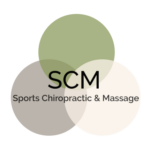
Neck Pain - Marin
Neck Pain | Mill Valley
Neck pain is a common medical condition. It potentially comes from any number of disorders and can involve any of the tissues in the neck. It is often accompanied by and can be the cause of headaches.
Acute pain has a sudden onset and can be related to an injury, an infection, or too much stress on sensitive tissues (like sleeping in a wonky position). Chronic pain can go on for years and is often related to underlying arthritis, degeneration, or chronic stress on sensitive structures (such as the TMJ).
Common Conditions Causing Neck Pain
- degenerative disc disease
- muscle strain
- injury such as in whiplash
- herniated disc
- pinched nerve
- Infections in the throat, mouth/teeth, or sinuses
- fibromyalgia
- poor posture
Risk factors include involvement in contact sports, a history of motor-vehicle accidents, a family history of arthritis, and chronic poor posture. Prevention in the context of these activities often includes neck stretches, strengthening exercises, and sometimes neck bracing.
Treatments for Neck Pain | Mill Valley
Proper treatment by and large depends on correctly identifying the cause of the pain and the structures involved.
Pain related to a muscle strain, postural stress or tightness often responds well to sports massage, stretching, and myofascial release. Improving one’s posture, improving one’s workplace ergonomics, and decreasing the amount of time spent looking down at a phone all help to reduce the amount of stress on the neck.
Pain associated with aggravated joints or pinched nerves often responds well to manual traction, icing, and joint manipulation. Most alternative medical treatments are safe, but there are many sensitive structures in the area of the neck. You should only be treated by a licensed professional, especially if you are having ongoing pain.
Many causes of neck pain are not serious and can be treated with conservative care. However, neck pain and headaches can be caused by more sinister underlying conditions such as meningitis and arterial dissection.
If your neck pain is uncommonly intense, associated with nausea, or started after an accident you should consult with a healthcare professional. Imaging may be necessary before alternative medical techniques can safely be administered.
A Deeper Look into Neck Pain
Neck pain can be common; there is a good chance that you have experienced some type of neck discomfort at one time or another. The neck supports your head, which can weigh 10 pounds or more! In addition to supporting your head it needs to be able to functionally move in all three planes of motion. Injuries and imbalances can cause cervical vertebrae to move out of their correct position (Subluxation). Tendons, ligaments and muscles can become inflamed and worn out, the discs separating the cervical vertebrae can herniate or rupture and the nerves can be damaged or irritated from the misalignment.
The neck changes as we age. Arthritic changes in the spinal bones such as abnormal bony growth, disc degeneration, and muscle or ligament deterioration may change the normal healthy curve of the neck and result in irritation of the nerves in the spine.
Problems of the neck if left untreated can lead to pain symptoms experienced in the face, shoulder, arm, wrist and hand as well as decreased motion.
Standard medical treatments for your neck pain can include muscle relaxants, painkillers and tranquilizers. Medications mask the pain, but they do not address the underlying cause. In many cases, chiropractic treatment can help ease pressure on the nerves and prevent the need for surgery. In most cases surgery should be considered only when conservative treatments fail.
The chiropractic approach to treating neck pain is to find the source of the neck pain and correct it. By correcting the source of the problem your body is able to heal itself naturally. Neck pain often responds dramatically to the restoration of normal spinal function through chiropractic care.
